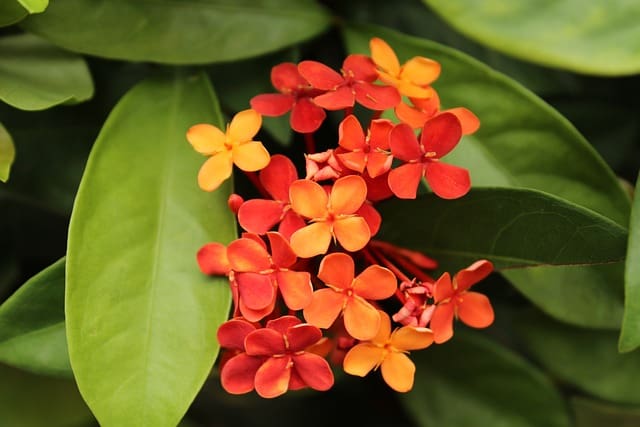Yellowing leaves on an ixora plant can be a cause for concern, but it’s not always a sign of a serious problem. Understanding ixora and the causes of yellowing leaves can help you identify the underlying issue and take the necessary steps to revive your plant.
Ixora is a tropical shrub that is often grown for its vibrant, showy flowers. It’s a popular choice for gardeners in warm climates, but it can be a bit finicky when it comes to growing conditions. One common issue that ixora owners face is ixora leaves turning yellow, which can be caused by a variety of factors.
Identifying the specific cause of yellowing leaves on your ixora is key to reviving a dying plant. In some cases, it may be a simple matter of adjusting the plant’s care routine.
In other cases, it may be a sign of a more serious problem, such as a disease or pest infestation. With the right care and attention, however, it’s possible to nurse your ixora back to health and prevent future yellowing.
Key Takeaways
- Understanding ixora and its unique needs is key to preventing yellowing leaves.
- Yellowing leaves can be caused by a variety of factors, including nutrient deficiencies, disease, and pests.
- Proper ixora plant care is essential for reviving a dying plant and preventing future yellowing.
similar posts:
Understanding Ixora
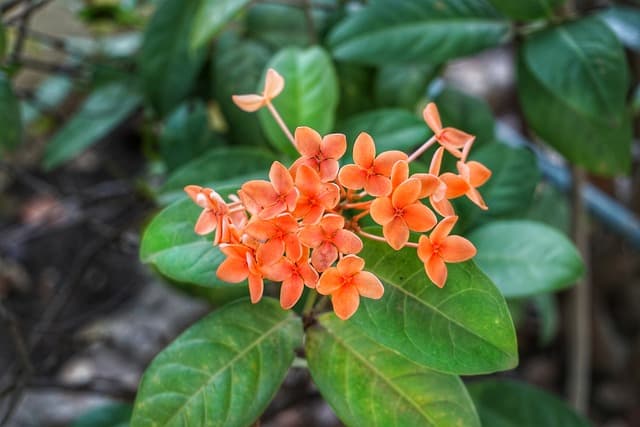
Ixora is a popular flowering shrub that belongs to the Rubiaceae family. It is a tropical plant that is native to Asia and is commonly found in gardens and landscapes. The plant is known for its vibrant and colorful flowers that bloom in clusters and attract pollinators such as bees and butterflies.
Ixora plants are relatively easy to grow and maintain, making them a popular choice among gardeners. They require well-drained soil, regular watering, and adequate sunlight to thrive. These plants are also known for their ability to tolerate heat and humidity, making them ideal for tropical climates.
One of the most common issues that gardeners face when growing ixora is yellowing leaves. This can be caused by a variety of factors, including nutrient deficiencies, pests, and diseases. It is important to identify the underlying cause of yellowing leaves to prevent further damage to the plant.
Ixora plants come in a variety of species, including the popular Ixora coccinea. This species is known for its bright red flowers and is commonly used in landscaping. Other species of ixora include Ixora chinensis, which has pink flowers, and Ixora finlaysoniana, which has yellow flowers.
Ixora Leaves Turning Yellow – 4 Common Problems
Ixora plants are known for their beautiful, vibrant flowers and glossy leaves. However, yellowing leaves can be a sign of various issues affecting the plant’s health. Here are some common causes of yellowing leaves in ixora plants:
1. Watering Issues
Ixora plants require consistent moisture to thrive, but overwatering or underwatering can cause the leaves to turn yellow. Overwatering can lead to root rot, which damages the roots and prevents them from absorbing nutrients properly.
Underwatering, on the other hand, can cause the plant to become dehydrated and make the leaves wilt and turn yellow. It is important to water ixora plants regularly, making sure not to let the soil dry out completely between waterings.
2. Soil pH Imbalance
Ixora plants prefer slightly acidic soil with a pH between 5.5 and 6.5. If the soil pH is too high or too low, the plant may not be able to absorb nutrients properly, leading to yellowing leaves. Testing the soil pH regularly and adjusting it as needed can help prevent this issue.
3. Nutrient Deficiency
Yellowing leaves can also be a sign of nutrient deficiency, particularly nitrogen, potassium, and phosphorus. Nitrogen deficiency can cause the leaves to turn pale green, while potassium and phosphorus deficiencies can cause purplish-brown spots on the leaves.
Fertilizing the plant with a balanced fertilizer can help provide the necessary nutrients and prevent yellowing leaves due to nutrient deficiencies.
4. Disease and Pest Infestations
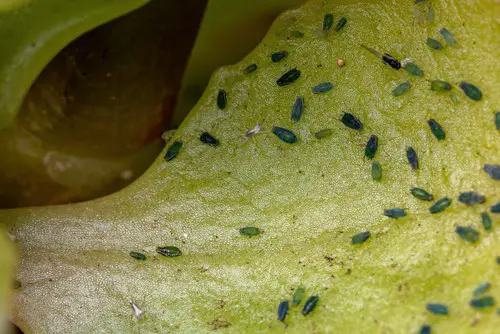
Ixora plants can be susceptible to various diseases and pests, which can cause the leaves to turn yellow and wilt. Common diseases that affect ixora plants include leaf spots and chlorosis, while pests such as spider mites and scale insects can also cause yellowing leaves.
Treating the plant with appropriate fungicides or insecticides can help prevent and control these issues.
Identifying Specific Diseases and Pests
Ixora plants are prone to several diseases and pests that can cause the leaves to turn yellow. Identifying the specific disease or pest is crucial to determine the appropriate treatment. Here are some common diseases and pests that cause ixora leaves to turn yellow.
1. Chlorosis
Chlorosis is a condition in which the leaves of the plant turn yellow due to a lack of chlorophyll. This can be caused by a nutrient deficiency, such as iron or magnesium. Chlorosis can also be caused by overwatering or poor drainage, which can lead to root rot.
To diagnose chlorosis, examine the leaves of the plant. If the veins of the leaves remain green while the rest of the leaf turns yellow, it is likely a nutrient deficiency. If the entire leaf turns yellow, it is likely due to overwatering or poor drainage.
2. Sooty Mold
Sooty mold is a fungal growth that appears on the surface of the plant. It does not harm the plant directly, but it can inhibit photosynthesis by blocking sunlight from reaching the leaves. This will stunt the growth of the plant, and if left untreated, will eventually kill it.
To diagnose sooty mold, look for a black, powdery substance on the leaves of the plant. This substance is the fungal growth. Sooty mold is often a secondary problem caused by the presence of insects, such as aphids or whiteflies.
3. Nematodes
Nematodes are microscopic worms that live in the soil and can cause damage to the roots of the plant. This can lead to yellowing of the leaves and stunted growth.
To diagnose nematode damage, examine the roots of the plant. If they appear brown and mushy, it is likely due to nematode damage.
4. Fungal Diseases
Ixora plants are susceptible to several fungal diseases, such as leaf spot disease. This can cause yellowing of the leaves and brown spots or lesions on the leaves and petals.
To diagnose fungal disease, look for spots or lesions on the leaves and petals of the plant. These spots may be purple or brown in color. Fungal diseases are often caused by overwatering or poor drainage.
Ixora Plant Care
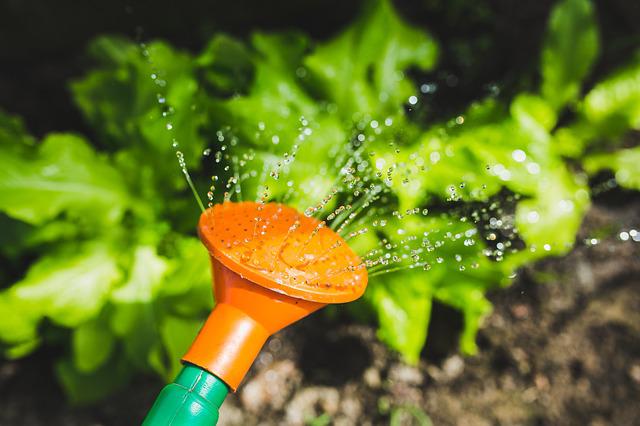
Ixora plants are tropical evergreen shrubs that produce clusters of bright, showy flowers. While ixoras are relatively easy to care for, yellowing leaves can be a sign of trouble. To keep your ixora healthy and vibrant, it is important to follow proper care guidelines.
1. Proper Watering
Ixoras prefer consistently moist, well-draining soil. However, overwatering can lead to root rot, which can cause yellowing leaves and other issues. To avoid overwatering, wait until the top inch of soil is dry before watering. During periods of hot weather, ixoras may require more frequent watering.
2. Soil and Fertilizer Requirements
Ixoras thrive in slightly acidic soil with a pH between 5.5 and 6.5. If your soil is too alkaline, ixoras may struggle to absorb nutrients, which can lead to yellowing leaves. To maintain proper soil acidity, consider adding peat moss or sulfur to your soil.
Ixoras require regular fertilization to thrive. Use a balanced, slow-release fertilizer with equal parts nitrogen, phosphorus, and potassium. Apply fertilizer every two to three months during the growing season.
3. Sunlight and Pruning Needs
Ixoras require full sun to thrive. If your ixora is not receiving enough sunlight, it may develop yellowing leaves. Make sure your ixora is planted in an area with at least six hours of direct sunlight each day.
Pruning is essential for maintaining the health and shape of your ixora. Prune your ixora in the late winter or early spring before new growth appears. Remove any dead, diseased, or damaged branches, and trim back any overgrowth to maintain the desired shape.
By following proper care guidelines, you can keep your ixora healthy and vibrant. Proper watering, soil and fertilizer requirements, and sunlight and pruning needs are all essential for maintaining the health of your ixora.
Reviving a Dying Ixora Plant
If your Ixora plant is showing signs of yellowing leaves, it could be a sign that it is dying. However, there are steps you can take to revive your plant and bring it back to its healthy state. Here are some tips on how to revive a dying Ixora plant.
Cutting and Propagation
One way to revive a dying Ixora plant is to cut it back and propagate it. This will allow you to start fresh with a new plant that is healthy and free from disease. To do this, follow these steps:
- Cut back the plant to about a third of its original size using sharp, sterile pruning shears. Make sure to cut just above a node or leaf.
- Remove any dead or diseased branches and leaves.
- Dip the cuttings in rooting hormone and plant them in a well-draining potting mix.
- Keep the soil moist and in a warm, bright location.
- Once the cuttings have rooted, transplant them into larger pots or into the ground.
Repotting and Fertilizing
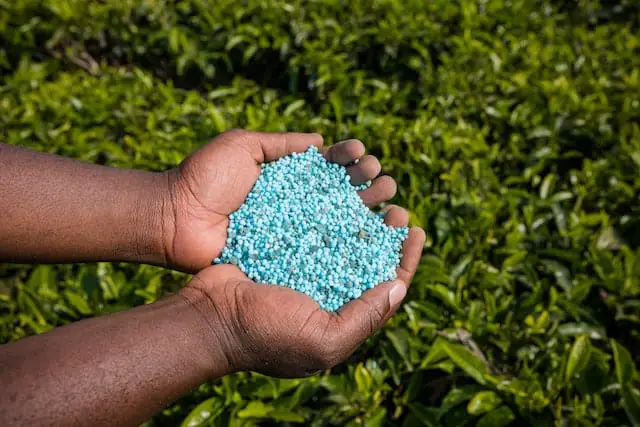
Another way to revive a dying Ixora plant is to repot it and fertilize it. This will give the plant a fresh start and provide it with the nutrients it needs to grow healthy and strong. Here are some tips on how to repot and fertilize your Ixora plant:
- Choose a pot that is one size larger than the current pot and has drainage holes.
- Remove the plant from its current pot and gently loosen the roots.
- Place the plant in the new pot and fill in with fresh potting soil.
- Water the plant thoroughly and place it in a bright, warm location.
- Fertilize the plant with a balanced fertilizer every two weeks during the growing season.
By following these tips, you can revive a dying Ixora plant and bring it back to its healthy state. Remember to keep the plant in a warm, bright location, water it regularly, and fertilize it every two weeks during the growing season. With proper care, your Ixora plant will thrive and produce beautiful blooms.
Preventing Future Yellowing
To prevent future yellowing of ixora leaves, it is important to maintain a healthy growing environment for the plant. This includes proper fertilization and addressing any nutrient deficiencies.
Regular fertilization with a balanced fertilizer can help prevent nutrient deficiencies that can cause yellowing of the leaves. It is important to choose a fertilizer that contains micronutrients such as iron and manganese, which are essential for healthy plant growth.
In addition to fertilization, it is important to ensure that the soil pH is acidic, as ixoras prefer acidic soil. If the soil is too alkaline, the plant may not be able to absorb certain nutrients, which can lead to yellowing of the leaves.
Another preventative measure is the use of neem oil, which can help prevent insect infestations that can damage the plant and cause yellowing of the leaves. Orthene can also be used to control insects, but it should be used sparingly and only as directed, as it can be harmful to beneficial insects.
Ixora Varieties and Their Unique Needs
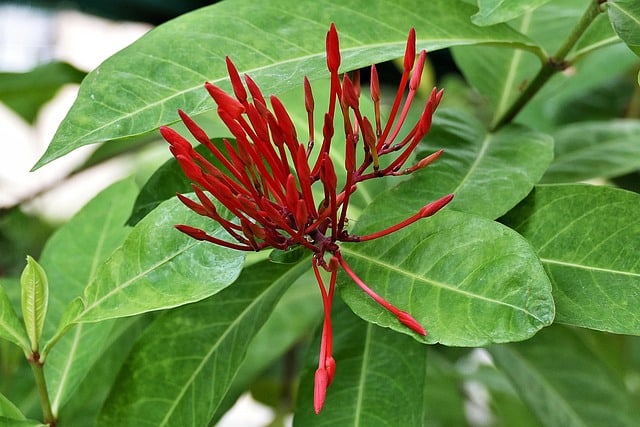
Ixora is a tropical plant that comes in various colors and varieties. Each variety has its unique needs and requirements. Understanding the specific needs of each variety can help prevent yellowing leaves and promote healthy growth.
1. ‘Maui’ Variety
The ‘Maui’ variety of ixora is a popular choice due to its vibrant red flowers. This variety requires a well-draining soil with a pH of 5.5 to 6.5. The ‘Maui’ variety prefers full sun to partial shade and requires regular watering to keep the soil moist.
2. Gardenia Variety
The Gardenia variety of ixora has white flowers and requires a slightly acidic soil with a pH of 6.0 to 6.5. This variety prefers partial shade and requires regular watering to keep the soil moist.
3. Coffee Variety
The Coffee variety of ixora has pink flowers and requires a well-draining soil with a pH of 5.5 to 6.5. This variety prefers full sun to partial shade and requires regular watering to keep the soil moist.
4. Red Variety
The Red variety of ixora has bright red flowers and requires a well-draining soil with a pH of 5.5 to 6.5. This variety prefers full sun to partial shade and requires regular watering to keep the soil moist.
5. Pink Variety
The Pink variety of ixora has pink flowers and requires a well-draining soil with a pH of 5.5 to 6.5. This variety prefers full sun to partial shade and requires regular watering to keep the soil moist.
6. White Variety
The White variety of ixora has white flowers and requires a well-draining soil with a pH of 5.5 to 6.5. This variety prefers full sun to partial shade and requires regular watering to keep the soil moist.
Ixora varieties require regular fertilization with a balanced fertilizer to promote healthy growth. The frequency of fertilization depends on the variety and the soil quality. Additionally, ixora varieties are susceptible to pests and diseases such as leaf spots and chlorosis. Regular inspection and treatment can prevent these issues.
Frequently Asked Questions

What causes yellow leaves on ixora plants?
Yellow leaves on ixora plants can be caused by a variety of factors. One common cause is a lack of nutrients, particularly potassium and phosphorous.
This can be due to a nutrient deficiency in the soil, or a lack of fertilizer. Another common cause of yellow leaves is overwatering or underwatering. In addition, ixora plants may develop yellow leaves due to pests or diseases, such as leaf spot disease or spider mites.
How can I prevent my ixora leaves from turning yellow?
To prevent ixora leaves from turning yellow, it is important to ensure that the plant is receiving adequate nutrients and water. This can be achieved through regular fertilization and watering.
It is also important to monitor the plant for signs of pests or diseases, and to take appropriate action if necessary. In addition, ixora plants should be planted in well-draining soil, and should be placed in a location where they receive adequate sunlight.
What is the best way to fertilize ixora plants?
The best way to fertilize ixora plants is to use a balanced fertilizer that contains equal amounts of nitrogen, phosphorous, and potassium. This can be applied every two to three months during the growing season.
It is important to follow the manufacturer’s instructions when applying fertilizer, and to avoid over-fertilizing, as this can lead to nutrient burn and other problems.
How often should I water my ixora plant?
Ixora plants should be watered regularly, but not overwatered. It is important to allow the soil to dry out slightly between waterings, as ixora plants are susceptible to root rot if they are kept too wet.
In general, ixora plants should be watered once or twice a week, depending on the weather and other environmental factors.
What are some common problems with ixora plants?
Some common problems with ixora plants include yellow leaves, leaf drop, and pest infestations. These problems can be caused by a variety of factors, including nutrient deficiencies, overwatering or underwatering, and pests or diseases.
It is important to monitor ixora plants for signs of these problems, and to take appropriate action if necessary.
Can Epsom salt help ixora plants with yellow leaves?
Epsom salt can be used to help ixora plants with yellow leaves, as it contains magnesium, which is an important nutrient for plant growth.
However, it is important to use Epsom salt in moderation, as overuse can lead to nutrient burn and other problems. Epsom salt can be applied to the soil around the base of the plant, or can be added to water and used as a foliar spray.

Hey, I’m Lisa and I’ve been an avid gardener for over 30 years. I love writing, talking and living in the garden! Feel free to connect with me on my socials below

